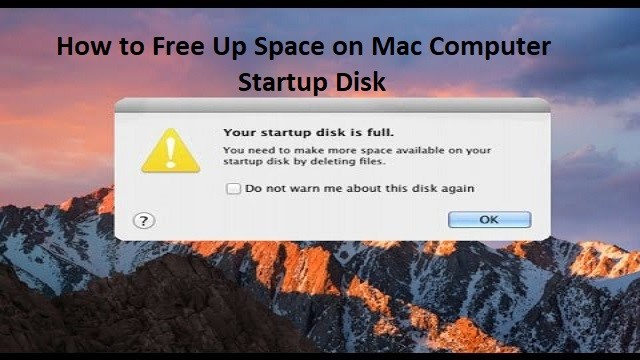
Is your Mac informing you that its startup disk is full even though free space is available on a hard drive or SSD? Wondering where all the drive space has gone? Here’s how to fix the issue…
Well, the startup disk on my Mac Pro has had around 40GB of free space available on a 500GB SSD. One morning my Mac suddenly informed me that my startup disk was almost full. I was wondering where all the hard drive space is gone! Surely my applications didn’t take up 500GB of hard drive space.
However, I had to fix this. So I blocked my work and started exploring the things. After a few hours’ work, I managed to locate and trash over 200GB of files and apps.
This article describes the method I used to resolve the above-said issue and at the same time helps those who may also be in the same or similar situation.
Solution –
CleanMyMac is a third party utility Mac application that automatically locates and safely trashes system junk, cache files & other useless junk that gets nestled deep within hard drives. I used CleanMyMac version 3 to get my job done. However, some of the main features of CleanMyMac 3 are as follows:
- Smart Cleanup: A one-click solution that quickly frees up hard drive space
- System Junk: Gets rid of broken items or leftover files and removes unused app binaries
- Photo/Mail/iTunes Junk removal
- Large & Old Files: Searches Mac for files such as zips, movies, and folders that are of significant size. Users have the choice to trash files or not
- Uninstaller: Removes applications and all related files to those apps without breaking the Mac OS
- Maintenance: Verifies disk, repairs disk permissions, Spotlight, Flushes DNS
- App Extensions: Enable/Disable extensions or remove altogether.
Running CleanMyMac 3
Since I wouldn’t have wanted to run into this problem again I aimed to trash at the clearing at least half of my startup disk.
The Smart Cleanup section does a lot of the hard work here, it scans the hard drive then presents us with a combined figure of space that the application believes is useless system junk and trash items.
This features quickly gave me back around 40GB, but I still wanted some more free space!
Uninstall Unused Applications
Under the Uninstaller section of CleanMyMac, I was presented with all the apps currently installed on my system along with each app’s file size and full file & folder directory. I was surprised to see so many applications, some were large apps, such as Logic Pro X, but many were some applications (sub 100MB) that I had only used once or twice.
I started trashing the apps which I had not used for longer than a year. Then, if there were any duplicate applications, I trashed them too. I even went as far as trashing Garage Band and Microsoft Office
After the applications clear out I managed to double my available free space from 40GB to 80GB. But again I wanted more!
Removing Unused AU and VST Plug-ins
Within the Extensions utility of CleanMyMac, you’ll find an Audio Plug-ins section that displays all VST and AU plug-ins on a system. I trashed nearly 600 unused AU and VST plug-ins off my system with the help of this section that returned me nearly 15GB of space.
I was surprised! So far then I had managed to clear 95GB of space… but I knew there was more hidden away somewhere.
Large & Old Files
CleanMyMac 3 Large and Old Files section showed me a number of large videos that I knew I had elsewhere on backup drives. This helped me to slim down the size of my Documents folder by 5GB max. I then dug around the Users directory and looked under the Shared folder only to find many sample libraries that I believed were installed on my dedicated Sample Drive. I moved over 100GB of random Native Instrument Kontakt libraries from my Startup disk to my Sample Drive and trashed the instruments folders off my startup disk.
At the end…I had over 200GB of free space.
Well, when it comes to Startup disk file management, it should be well managed at regular intervals of time. Otherwise, you may end up with a day held like a hostage and get no choice but to spend several hours reorganizing the things.
So the moral is avoidance is better than cure!
If anything goes wrong and you accidentally or mistakenly deleted any files, then you can perform recently deleted files recovery using file recovery software for Mac machine.”
